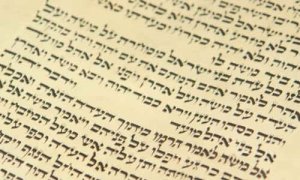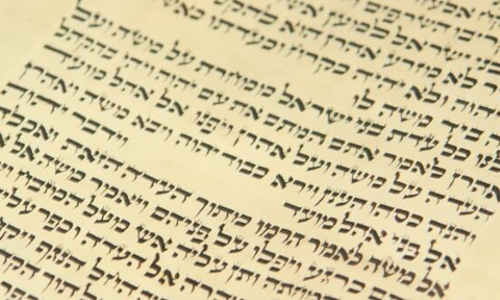
Note: The Shabbos Torah Reading is divided into 7 sections. Each section is called an Aliya [literally: Go up] since for each Aliya, one person “goes up” to make a bracha [blessing] on the Torah Reading.
1st Aliya: The laws of the Red Heifer, are detailed. In Nissan of the 40th year, Miriam died. The well dried up and the nation gathered against Moshe and Aharon to complain about their thirst.
2nd Aliya: The hitting of the rock occurred and Moshe and Aharon were forbidden to enter into Eretz Yisroel. Edom refused to allow the Jews to travel through their land.
3rd Aliya: Aharon died and Elazar succeeded his father as Kohain Gadol. They encountered the southern Canaanites (13 miles west of the Dead Sea) and bested them in battle. Following Aharon’s death the protective clouds departed and the nation began to complain about the living conditions. G-d sent poisonous snakes to attack the nation and Moshe was instructed to create the copper snake on a stick to miraculously save those having been bitten. The nation traveled to Yeshimon northeast of the Dead Sea.
4th Aliya: In the conclusion of Chukas, the nation was refused access to the lands of Sichon and Og and Moshe led them into victorious battle against them. Parshas Balak begins with King Balak’s offer to Billam the Prophet to curse the Jewish people and G-d’s refusal to allow him to accept.
5th Aliya: Balak sent a second negotiating team and Billam was given permission to go. Along the way the incident with the talking donkey occurred.
6th Aliya: Billam failed his first two attempts at cursing the Bnai Yisroel and blessed them instead.
7th Aliya: Billam attempted his final curse but again blessed the Jews. As he left in disgrace, Billam told the assembled coalition of kings of their eventual destruction by the Jews. As a parting shot against the Jews, he advised Balak to seduce the Jewish men with Midianite women which would bring G-d’s wrath down upon the nation. The Parsha concludes with the incident of Baal-Peor and Pinchas’s heroism.
The 3 Weeks & The 17th of Tamuz
The fasts of Gedalia, the 10th of Teves, the 17th of Tamuz, and Tisha B’Av, were ordained to commemorate the destruction of the 1st and 2nd Batei Mikdash (Temples). Beginning with the 17th of Tamuz – July 1st and culminating on Tisha B’Av – July 22 is a period of mourning. As legislated by the Talmud and amplified by our customs, the degree of mourning becomes more intense as we approach Tisha B’Av.
The laws of the 3 Weeks extend from July 20; the 17th of Tamuz, until after Tisha B’Av; August 10. Our custom is not to shave or take haircuts during this three-week period, and it applies to men and women. Marriages are not performed and it is forbidden to rejoice with music and dance. The custom is to refrain from listening to any music, or to attend any public entertainment. Occasions necessitating the Bracha of Shehechiyanu, such as wearing new clothes or eating a new fruit should be avoided during the Three Weeks. Purchasing new clothing is also not permitted unless there are extenuating circumstances. Please refer all such concerns to your local rabbi.
On the 17th of Tamuz, five tragedies befell the Jewish People. In commemoration of these events Chazal; the Rabbis ordained a fast day.
- Moshe returned from Mt. Sinai and witnessed the Golden Calf. Moshe broke the first Luchos.
- From the day that the Mizbeach (altar) was inaugurated in the desert (2449), offerings were sacrificed every single day for 890 years. During the fall of the first Bais Hamikdash, there were no more sheep to sacrifice due to the hunger, and the daily offerings were stopped.
- During the fall of the second Bais Hamikdash, the Romans breached the walls of Yerushalayim. At the destruction of the 1st Bais Hamikdash, the walls were breached on the 9th of Tamuz. The fast of the 17th commemorates both occasions.
- The Talmud in Taanis recounts that in 2610, right before the story of Channukah, Apustomus, a Syrian governor, publicly burned a Sefer Torah.
- In 3228, during the 1st Bais Hamikdash, King Menashe placed an idol in the Bais Hamikdash. During the era of the 2nd Bais Hamikdash, Apustomus did the same.


